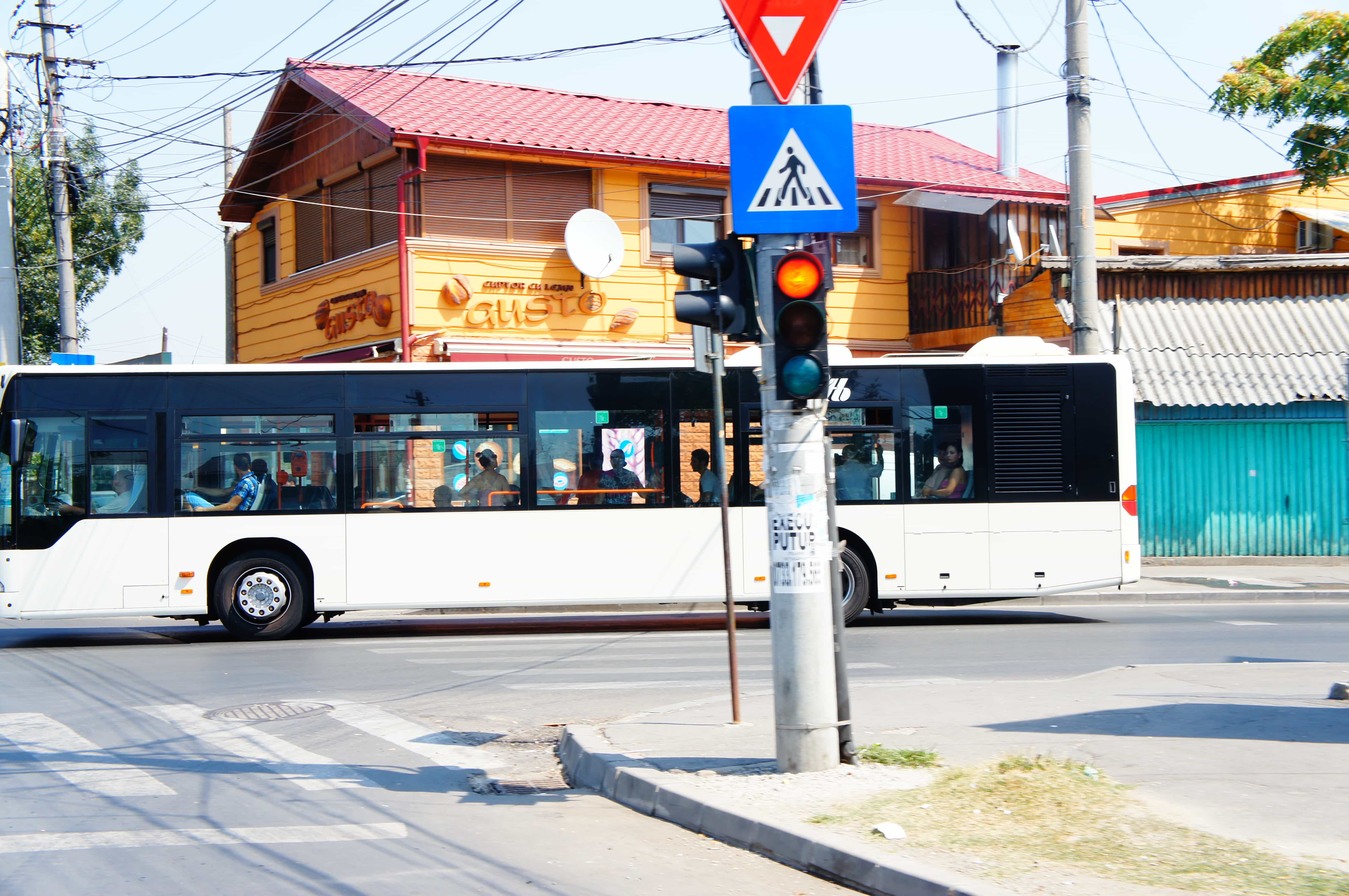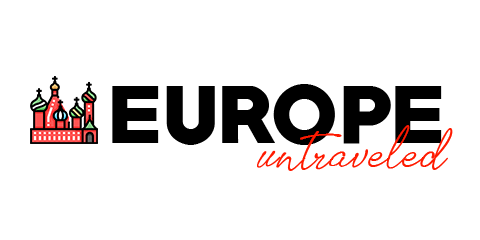As a travel enthusiast I am always looking for ways to stretch my budget. In fact, one of the primary reasons I made this website is to illustrate that interesting, authentic travel does not have to be expensive; and when it comes to transportation, Romania has many affordable options for getting around.
The best way to get around Romania is to utilize the country’s terrific mass transportation system. Most Romanians don’t have cars, so the country is literally designed around train, light rail, and bus networks. Utilizing Romania’s mass transportation system is easy, affordable, and far safer than driving.
In this guide, I’ll explain each mode of transportation found in Romania, what it will cost you to use, and how to use it.
Trains (Trenuri)
Best for: Traveling long distances or to neighboring countries.
Cost: A train ticket from Bucharest (Gara de nord) to Brașov costs 30 RON, or $7.50.
How to: Every major city or town in Romania has a train station. Because most people get around by foot, the train stations are almost always located at the heart of the city, so you won’t have to do much walking to get there. To ride the train, check the timetable at the train station (gara de tren) and purchase your ticket at one of the ticket counters. You can check timetables and ticket prices ahead of time by visiting Romania’s rail information website.
If you are traveling more than 6 hours by train, I would strongly suggest taking a “sleeper train.” These trains run during the night and you’ll receive your own bed and fresh linens as part of your ticket. The standard sleeper cabins fit 6 people, so be prepared to have a slumber party with total strangers (see: cultural experience). Be sure to specify to the ticket lady that you would like a ticket for the sleeper car (vagon cușetă), or you might get stuck sitting upright for 10 hours.

Maxi Taxi (Maxi-Taxi)
Best for: Trips across town or to small villages on the outskirts of larger cities. Maxi-taxi’s are also used when train schedules are inconvenient or sold out. They are also the best way to reach small towns that lack a train station.
Cost: A trip from Bucharest to Otopeni (on the city’s outskirts) costs 5 RON, or $1.25. A trip from Bucharest to the Sea costs 50 RON, or $12.
How to: Maxi-taxi’s are small, bus-like vehicles which are independently operated. If you plan on taking a maxi-taxi outside of the city, then you should head to the intra-city bus station (autogară). These are usually, though not always, located near the train station. At the autogară, you will usually find signs posted which display timetables and routes for the maxi-taxi buses that operate at that station (but I also recommend this awesome site which shows maxi-taxi routes and timetables for all of Romania). All maxi-taxi buses have their route displayed in the windshield on large placards, so scan the station to see if your maxi-taxi has arrived. Once you spot your maxi-taxi, climb aboard and pay the driver for a ticket, being sure to state your final destination. The maxi-taxi buses can fill up fast, so don’t wait around to climb aboard and get your seat.
If you plan on taking a maxi-taxi to a local destination, or a nearby village (sat), then there is a good chance you’ll need to catch your maxi-taxi from a point within the city and not at an autogară. Many maxi-taxi’s make stops at local bus stations, so checking there first is your best bet. If you don’t notice a sign posted for a maxi-taxi service, then try asking a local (old people are really good resources) for information about maxi-taxi’s that service your destination.
Local Bus (Autobuz)
Best for: Getting around town.
Cost: One bus ride in Bucharest will cost you 1,30 RON, or $0.30.
How to: I won’t go into too much detail here, since taking the public bus in Romania is just like any other city. To ride the bus in Romania, you typically will need to purchase a ticket beforehand. In some cities, there are automated ticket machines that can sell you tickets. If not, there are typically kiosks around the city that sell bus tickets. Simply purchase a ticket, wait for the bus, and climb aboard. Once aboard, make sure you stamp your ticket or else you may incur a fine.
Buses in Romania are quite reliable as they are the most common mode of transportation in many cities. Most buses lack air conditioning, though, so they can get quite hot during the summer months. In Romania, it is considered unhealthy to leave the windows down while driving, so many buses will have all of the windows shut, even in the sweltering heat of the summer. If you plan on riding the bus, be sure to bring lots of water!

Light Rail (Tramvai)
Best for: Getting around town.
Cost: One ride on a tramvai in Bucharest will cost you 1,30 RON, or $0.30.
How to: Many cities around Romania have extensive light rail networks. If there is a light rail line near your destination, I would advise taking the light rail (tramvai) over the bus. Light rail cars usually have higher capacity and so it is easier to find a seat than in the buses. To ride the tramvai, follow the same steps you would take to ride the bus. In most cities, the tickets for the tramvai are interchangeable with bus tickets, so you can ride a tramvai or a bus using the same type of ticket. Tramvai and bus tickets aren’t valid for use on the metro, however, so keep this in mind if you will be traveling in Bucharest.
Metro (Metrou)
Best for: Getting around Bucharest.
Cost: A ticket for 2 trips costs 5 RON, or $1.25, while a 24-hour pass costs $2.00.
How to: I am obsessed with Bucharest’s metro. The metro system is robust and has stations for all of the most popular destinations around town. The city is expanding the metro constantly and three new lines are in the works. Stations aren’t very far apart, either, so taking the metro is by far the most convenient way to get around the city. The cars are air conditioned and the stations are lively with lots of convenience stores, pretzel stands, and even clothing shops.
To ride the metro, find the station nearest you and purchase a ticket from the automated kiosk or one of the ticket booths. Google Maps is integrated with Bucharest’s metro system, so you can search for directions using the Public Transportation feature in Google Maps. This website is also a great guide to Bucharest’s metro if you prefer a site that consumes less data.
Conclusion
Getting around Romania via mass transportation isn’t only convenient, it’s also an incredible cultural experience. There is something about the smell of the metro in the morning and the heaving of the bus as it chugs along Bucharest’s grand boulevards that makes you feel like a native Romanian, even if it’s just for an instant. Mingling with natives as you travel from one point to the next will provide you ample opportunities to observe a new culture, try new things, and make new friends. A final tip: Romanian baba’s know everything. If you find yourself lost or unsure which bus you need to take, ask the oldest old lady you can find, she knows the way!
Cheers and happy travels.

